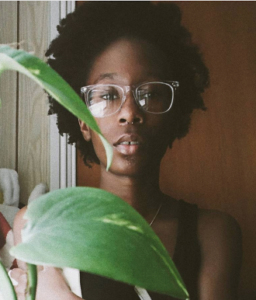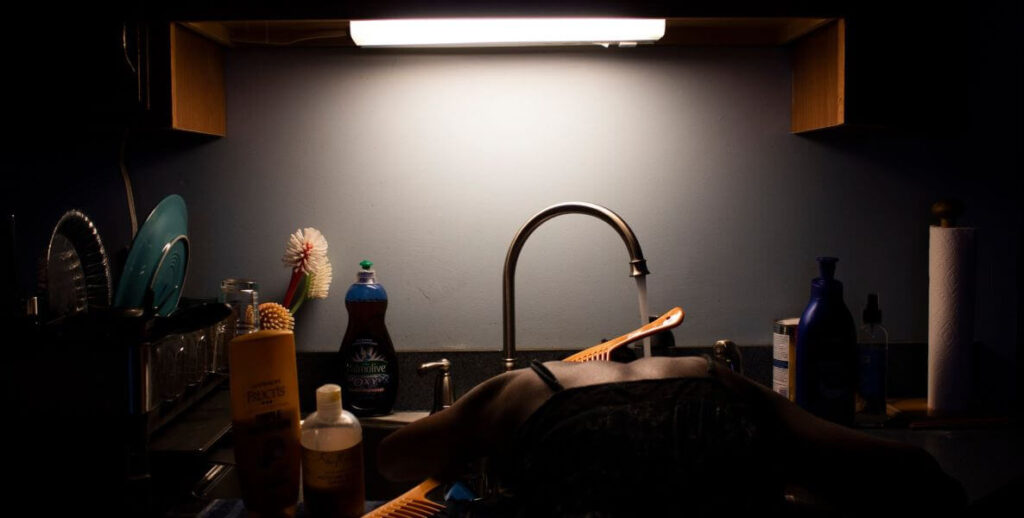Danielle Morris describes herself as “probably more of a photographer than a writer.” She is being modest.
Largely self-taught, the West Philadelphia resident Morris has exhibited at PAFA, the Colored Girls Museum, and Washington, D.C.’s Corcoran as part of the Women’s Mobile Museum. (The exhibit travels to South Africa later this year.) Her portrait inspired by The Moorish Chief was selected for the Barnes Foundation’s Let’s Connect Philly contest. Right now an exhibition of photographs of her family home in West Philly are on exhibit at The Study at University City.
For the past three years, Morris has taught photography at Kensington’s TILT Institute for the Contemporary Image, formerly known as Philadelphia Photo Art Center, where she is also the youth education and membership coordinator — and an advocate for inclusion and diversity. She’s also a teaching resident at the Academy at Palumbo, her old high school.
Morris is not probably more of a photographer. She’s undoubtedly one.
“This lecture is a love letter to a language I was never meant to have,” Morris says.
Her work is often personal, regularly street-focused, and, more recently, largely representational. Inspired by Lorna Simpson, Natalie Keyssar, Takashi Homma and Carrie Mae Weems (among others), guided by visual activist Zanele Muholi and writer and Museum of Black Joy curator Andrea Walls, Morris has honed and evolved distinct artistry.
Still, when the photographer lectures on “Black Talk, a Language Deferred,” an exploration of the history and implications of African American Vernacular English, at The Study at University City this week, she will do it as an observer of sound, not image.
Here, Morris talks about her journey from toy camera to fine arts photography, her commitment to conscious representation, and her take on Ebonics.
This interview has been edited and condensed for clarity.
Beginning with a Barbie camera
I’ve always been around photography, but I never really thought much of it, because it was just so normal. My family had always been taking photos.
I got my first camera when I was maybe six or seven. It was a little Barbie point-and-shoot. My Nana still has it. She keeps everything. I’m probably going to put some film in one these days and take it out.

I would take disposable cameras with me to middle school. In high school, I really got into it. I loaded up on AP classes my junior year. So, by the time I got to my senior year, I had two classes and was able to leave school earlier. I would meet up with a couple of my friends who also had three classes or four classes. We would walk around the city, exploring the streets and exploring different forms of art … I was really interested in graffiti and street art and breakdancing and things like that. … and I’d take a lot of photos.
I never considered myself a photographer until I got a reliable camera phone … My cell phone shot in RAW, which was extremely important and helpful. It also had advanced settings that would be on a digital camera, so I could manipulate the cell phone like a DSLR camera.
With my cell phone, I could take as many pictures as I wanted and have them accessible to me. Then, because of Instagram, I was able to share them with people. More than taking photos and sharing them with my friends, now I could take photos — and other people outside of myself would see them.
Evolving through self-education
After high school, I went to Temple for psychology. I realized that school wasn’t where I wanted to be at the time. So, I did the retail thing for a while. I picked up some books, some MFA coursework. I was like: I can study this, I know how to learn. I think that higher education is incredible. I think it’s awesome, but I do think that it’s inaccessible.
Then I started going to [photo] shows and meeting other people. I found a mentor at an exhibit at the African American Museum [in Philadelphia]. The photographer was in the fine art world, which is where I see my art living and being, and also the commercial world. I became a first assistant, scouting locations, paying attention to detail, making sure there was nothing out of place during a shoot.
Around 2016 I started developing a practice, exploring different avenues, trying to figure out where my voice was in photography, what pictures I wanted to take, what I didn’t want to take — which was very helpful.
I love finding things that you expect to be inside, outside. If I see dining chairs outside, or mops … it’s like getting a peek at something that I probably wouldn’t normally have seen. Those objects hold everything of the people that own them.
Street scenes as still lifes
I learned I have a hard time photographing people in a way that makes them identifiable. It’s one thing to be an artist and subject yourself and your art to scrutiny. But it’s different when you subject another person to that, to being scrutinized by strangers.
I’ve made the decision to take the identifiable person out in order to let the image speak to emotions, without the emotions being directly tied to a person.
Recently I’ve been likening my work to mundanity. There’s a beauty of just normal everyday things, things that people use and the places people go.
I love finding things that you expect to be inside, outside. If I see dining chairs outside, or mops things like that, it’s like getting a peek at something that I probably wouldn’t normally have seen. Those objects hold everything of the people that own them. Somebody probably sat in that dining chair and got the best news of their life or had a really long day and finally got some rest in that chair. So I can represent people, without them particularly being there. It’s technically still life.
Portraying the family home
Larchwood [currently on exhibit at The Study] is photos of my grandfather’s house, which was passed down to my dad, and now my name is on the deed.
Larchwood is about the consistency, the unchanging nature of a home. The house is changing hands. Things are progressing. It’s old; updates are inevitable; they need to be made. Before these updates happened, I wanted to capture artfully the things and the way my grandmother left it.
One of the portraits is Hands of the Giver. Those are my Nana’s hands, the ones she literally raised me with.
Reframing Black speech
I spend a lot of time writing, and I think about how my writing differs from my speech, and when it differs from my speech. Code-switching is something that I cover briefly in my lecture, but it was interesting to think about how I talk when I’m speaking to specific types of people, why I feel the need to speak differently in certain situations, and the fact that people have a hard time understanding Ebonics or African American Vernacular English (AAVE), the native language of the diaspora.
I knew that the way this language is spoken wasn’t just arbitrary grammatical mistakes, although that’s sort of the reputation it has garnered, but I didn’t know exactly what the rules were.
There is a structure to Black language. The language came about through necessity, need for survival, through the violence of colonialism and the longstanding effects of unjust and unequal systems.
As it says in the event description, this lecture is a love letter to a language I was never meant to have.
On Thursday, April 28 at 6 pm, Danielle Morris presents her lecture, “Black Talk, a Language Deferred,” at The Study at University City, 20 S. 33rd Street.

